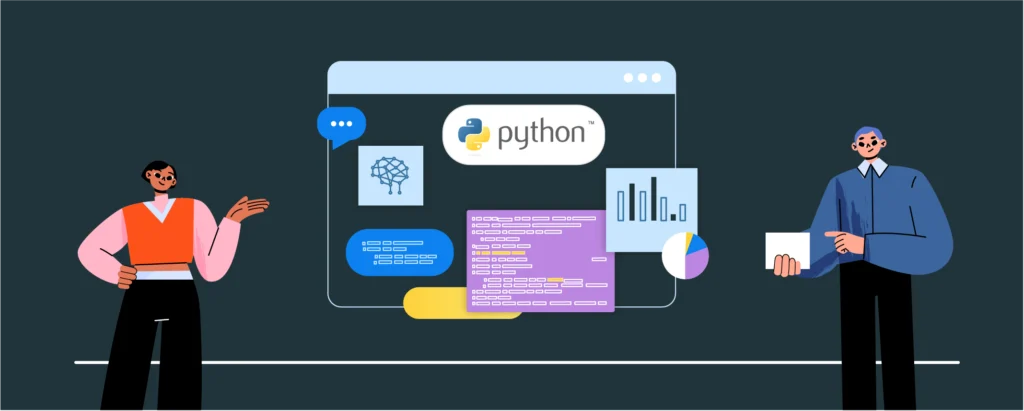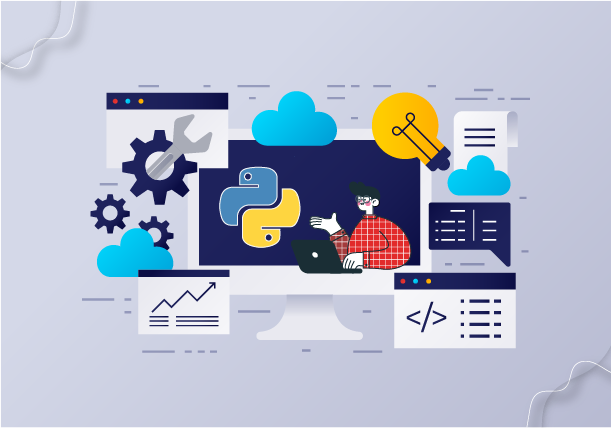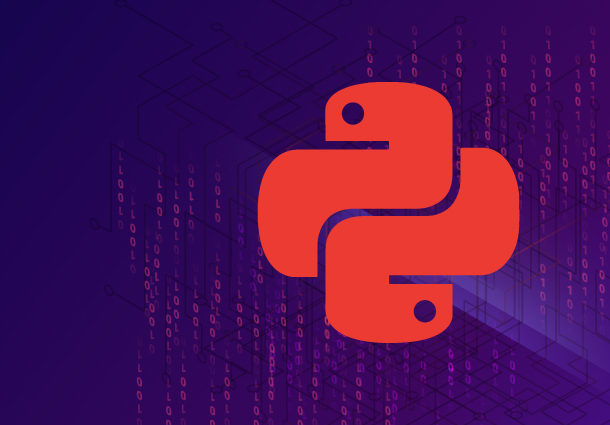Paving the Way of Dominance by Python for Web Development
Python for web development has become the most popular and widely used language globally. But certainly, do you know about the fact that this widely used programming language was a holiday project? A holiday project! Yes, you have read it right. It was created by programmer Guido van Rossum, when he was on a Christmas holiday and looking for something fun to do, in 1989. After two years, Python stepped into the spotlight.
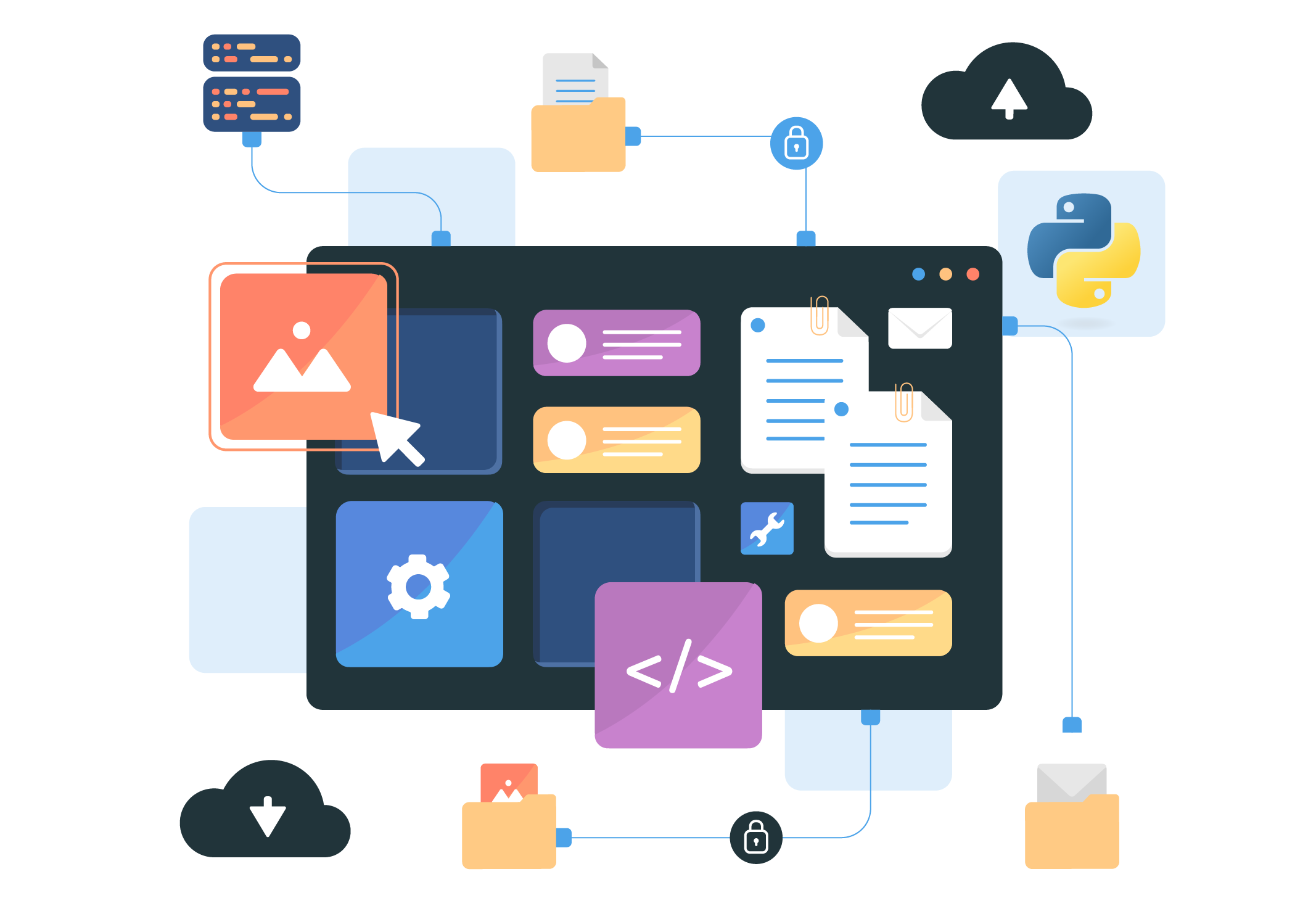
Developing a website can be a challenging task. Since a lot of coding is required to build that one good product, many coding languages have been put up like an option on a plate. But which one to choose among all of them? Undoubtedly it’s Python! Because programming should be less hiss-terios than Pythonic! But, wondering why? Web development using Python is widely used due to its multipurpose framework, fast processing, and handling of the complete development process, and it has large community support. But are you still in doubt as to why developers have chosen Python for web development? Is Python a good choice for web development?
Don’t Worry! We will answer all of these questions in this blog. We will first peak into the basics of web development with Python and why someone should rely on Python for web development. Additionally, we have also seasoned this blog with the benefits of using Python for web development along with Python’s framework. For further clarification of your doubt, we will also examine some case studies of companies using Python. So without any further delay, let’s begin this quest together.
Delineating the Digital Alchemy of Web Development Using Python
Web development using Python is the process of creating and building websites and web applications. Web development consists of two segments, frontend development and backend development. Frontend development also known as “client-side” mainly focuses on websites visually appealing for user interactions. It certainly involves designing the user interface (UI) and user experience (UX), designing the layouts, and implementing the visual components. Front-end developers work with various tools, technologies, and languages which include, HTML (Hypertext Markup Language), CSS (Cascading Style Sheets), and Javascript technology. HTML, or Hypertext Markup Language is used to create the structure and the layout of web pages. CSS is used to control the formatting, presentation, and appearance of web pages, such as color and fonts. JavaScript allows developers to add interactive animations and other dynamic elements to the web applications.
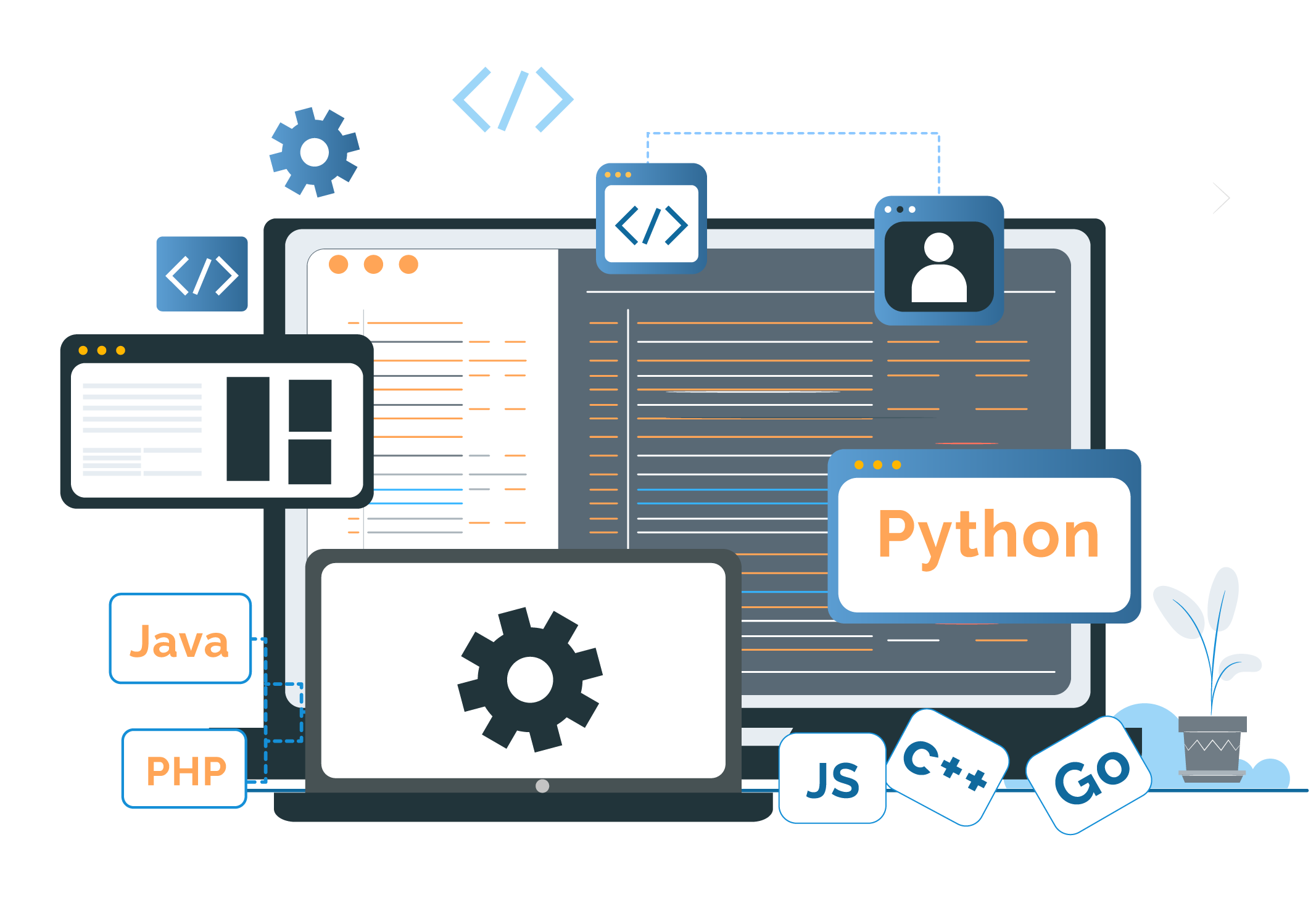
On the other hand, Backend Development bargains with the server side of the website. It is generally behind the scenes that users don’t see or directly interact with, but it powers the websites and apps. It involves creating the logic and infrastructure that supports the functionality of the website, handles the data processing, and interacts with the databases. The backend technologies involve PHP, Java, Python, and Node.js. Moreover, Backend frameworks are Laravel, Express, Django, Flask, Ruby on Rails, Spring, .NET, and much more. Backend developers are more concerned with the system and structures that grant computer applications to work well. Moreover, the responsibility of the backend developers is to ensure the functionality of the website.
The Diabolism of Python by Mobilizing the Power and Flexibility for Web Development
Python is ultimately a programming language that has flaccidity and gained a lot of popularity in web development for creating applications and websites. Python is known for its simplicity, readability, and a huge ecosystem of libraries and frameworks. It also offers several advantages, making it a go-to choice for creating potent and scalable web applications. Python’s simple syntax allows developers with intricate systems and smooth conversations to work efficiently on the same project. Furthermore, Python also has a vast community of developers who enrich the growth and support offered. The community also offers a vast range of libraries and frameworks that make Python a strong choice for web development.
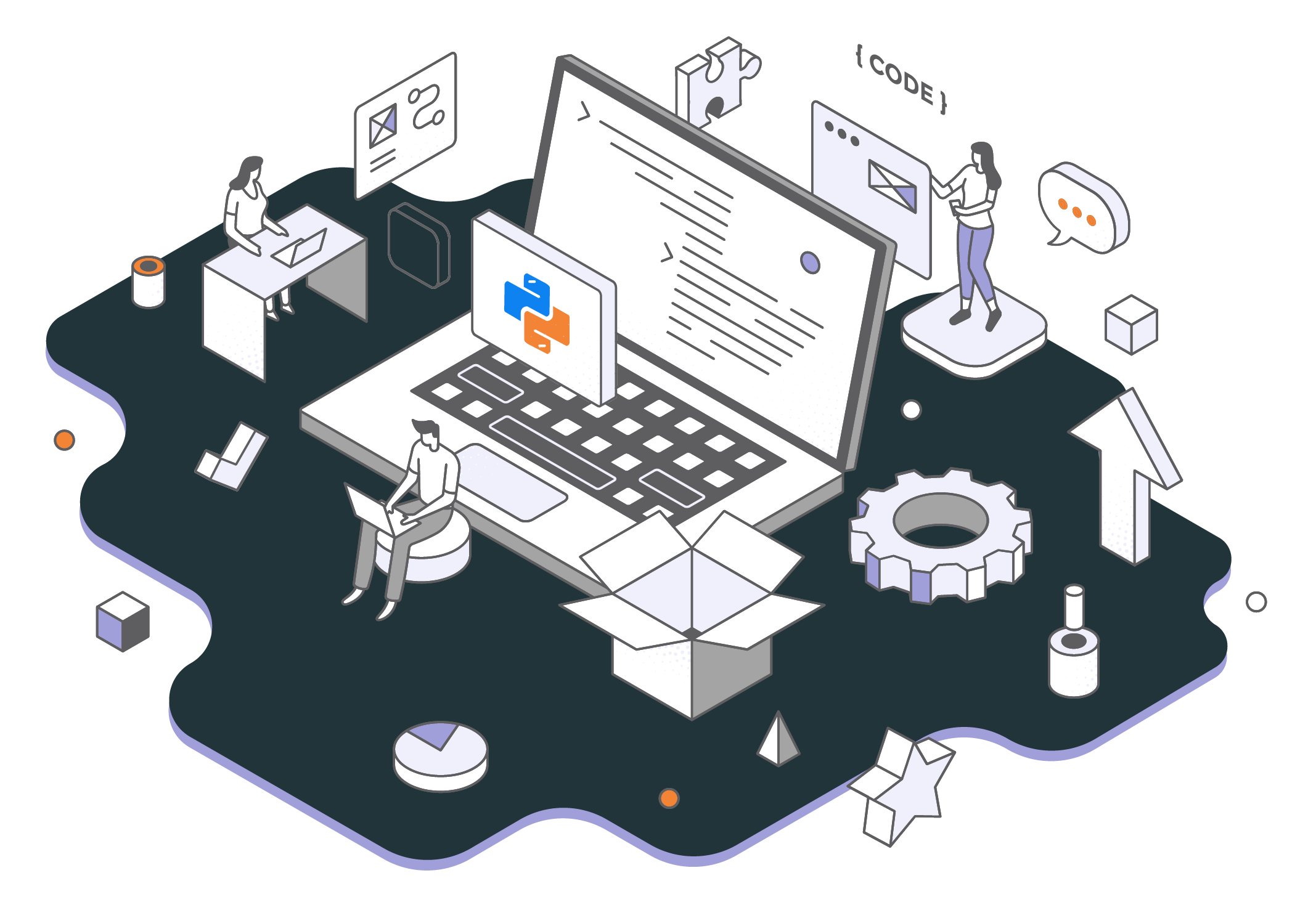
Django is one of the most popular Python web frameworks, that provides a complete and robust set of tools for curating dynamic web applications. Django is a back-end Python web development framework that uses model-view-template (MVT) architecture for organizing the code. Another framework named Flask, allows developers to decide what tools should be used, and this makes Flask a bare minimum choice for web development. On top of that Python for web development is also known for its scalability and performance, which makes it suitable for tackling high-traffic web applications. Python’s frameworks like Django and asyncio can easily handle huge requests and maximize server resources. Furthermore, Python’s integration capabilities also allow easy alignment with other languages, allowing developers to ascend high-performance libraries jotted in C and C++ when required. Furthermore, python supports various databases which include SQL-based databases like MYSQL, PostgreSQL, and MongoDB.
Also, its compatibility is extended to web servers, caching systems, and API, which allows developers to accommodate different components and services. Additionally, python also offers testing frameworks like unit test and pytest which unscramble the entire process of writing and executing the test for web applications. Moreover, web development with Python can add a benefit by providing debugging capabilities that allow developers to detect and fix issues immediately. When it comes to delivering rapid web development, Python’s simplicity and productivity help developers create a web application at a breakneck phase. Due to its pre-built modules and libraries, it allows developers to take advantage of the existing solutions and this rapid method is beneficial for start-ups and small-scale projects.
Emerging the Theurgy of Python’s Framework in Web App Development
The perfect reason for Web development using Python is that it offers numerous frameworks to reconcile various purposes. The first and foremost Python framework is Django, a fully-fledged and popular web framework that is used for mid-range scalable projects. To simplify web development in Python it has built-in features and allows the reusability of code and different components of code.
Django functions well with OracleSQL, PostgreSQL, MySQL, and other databases. Also, Django follows the Model-View-Controller (MVC) architectural pattern. Flask is another framework by Python. Yes, it is a framework, not a regular bottle to fill with hot water! It is a simple and flexible framework which is also referred to as micro-framework. Flask was developed by Armin Ronacher in 2010, and Django and Flask serve the same development purposes but they have an entirely different philosophy. Flask is best suitable for small and medium-sized web applications. Due to its micro-framework, it allows developers to take complete control over the web application’s architecture. Pyramid is another framework that is used for web development using Python that maintains the balance between simplicity and power. Pyramid uses various databases and applications, allowing Python web developers to add functionality as per their needs. This framework is suitable for any project, whether it is a small application or a large-scale enterprise system.
Besides, there is another framework by Python that is CherryPy, a minimal web framework that strikes a goal to be fast, stable, and scalable. It has a simple and intuitive API for handling HTTP requests, and URL routing. It is a standalone Python application that has a multi-thread web server. Another Python framework that comes into a portrayal is TurboGears. It sounds more like it belongs to the automation industry, but it is a framework that consists of several components, such as Repoze and WebOB, and it is based on the MVC framework. This framework allows developers to write small or complex applications for minimal or full-stack modes.
A Congruence of Web Development using Python by Fulgent Its Case Studies
Python has gained immense spotlight in the technology sector and most of the global tech companies use Python for developing web applications. Do you find yourself questioning which tech-savvy companies use Python for web development? From Instagram to Spotify there are plenty of companies that use Python.
Instagram is the most popular application and was built using Python’s framework, Django. Developers at Instagram have created a static sort checker to investigate its servers. Also, Python allows Instagram for fast monotony to restart the application after testing new features.
Uber uses Python to perform several calculations. Python predicts the estimated arrival time and traffic. Additionally, Uber’s Python application development is extended from frontend to backend functions. It helps in creating a logging function and also provides data management. Uber uses Tornado, a Python web framework for asynchronous programming.
Another company that uses Python for web development is Spotify. Spotify, a music streaming application uses Python since it plays a vital role in maintaining the backend services that form a pillar of Spotify’s platform. Furthermore, Spotify uses Python to bolster its ability to understand advanced data analytics. Also, Python is used for analyzing the data and interacting with Hadoop. Additionally, after Instagram, Pinterest is the second most popular application that is used worldwide. Pinterest uses Python to manage their data easily. It also uses Python for its flexibility and pragmatic approaches as well.
Vanquishing the Journey of Python Web Development with Pattem Digital
Let’s close this topic by sailing towards the conclusion that Python has gained a lot of popularity in recent years and also in creating web development. It offers a plethora of benefits and frameworks that rationalize the process of creating scalable web applications. Python Frameworks like Django, Flask, Pyramid, CherryPy, and TurboGears are directed to create diverse projects from medium-sized projects to small-scale projects.
Furthermore, Python’s capabilities with various databases, web servers, and caching systems, provide developers ample flexibility. Some real-world case studies of various companies like Instagram, Spotify, and Pinterest, use Python in developing highly complex web applications and making it a preferred programming language.
In a parallel world, Pattem Digital, a leading Python development company delivers innovative and tailored web app development solutions. With a team of skilled developers in Python’s frameworks and technologies, Pattem Digital specializes in crafting authentic web applications that meet the unique requirements of businesses across diverse domains.
